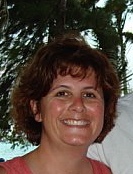Introduction to Technology in Schools
Course Description, from the University of Missouri Course Catalog
Study of theories and practices associated with educational technology.
Explores basic instructional design processes and strategies for integrating
technology into teaching and learning. Provides an overview of the EdTech
filed and a survey of emerging trends
Reflection
I must confess, when I began this course, I thought I was savvy
about Educational Technology. In my building, I am considered one who really understands technology.
When we first had to log on to Blackboard, I nearly had a panic attack. Here I was, taking a class, and I couldn't even figure out how to set my password. Now I am logging into Blackboard and Sakai daily, and have almost forgotten how scary it was. I have come a long way. My first 'eye opening' experience was when we needed to complete the Teacher Interview with a partner. I interviewed a colleague who I considered "tech savvy". She uses a lot of technology resources in her class. Then I read the responses from my partner's interviewee. I could not believe how much technology and teacher support there is in Missouri. I was impressed with this amount of technology, and even more impressed with the amount of professional development in this area. I realized then that Massachusetts, and specifically my school district, has a long way to go. During this semester I also was introduced to the ADDIE model of instruction. Specifically, this process allowed me to look at my planning (with my TILP) as something fluid, which is moldable and changeable as needed. One aspect of the ADDIE process that was missing from my instruction was the needs assessment. Before this course, I hadn't given much thought to the needs assessment, I often used pre-tests only. Using a needs assessment has allowed me to differentiate more with instruction, allowing those ready to move ahead to do so, while highlighting (for me) those who may need a bit of extra help.
There is a world of technology out there that I hadn't even considered accessing. I learned that there are sites, such as Blackboard, which I had never had the opportunity to try. I considered the possibilities with using this type of site in a classroom environment, and then realized that this is something already being done in many parts of the country. During this course, I learned the importance of "learning with technology" rather than "learning from technology". Although I believe that I was teaching using both philosophies, I did not note a difference, and hadn't even thought about how each impacts my day-to-day teaching. I never really considered the differences, although my students learned both "with technology" and "from technology". When planning my instruction, I have become much more aware of this. It is not about using technology in the classroom, it's about using technology effectively.
I also became more aware of the ways to use technology in the classroom. Reading the articles and summaries from other groups in our class gave me ideas regarding this. Using concept maps, in a simplistic way, is something that I have done in my class for years. I now know about Inspiration and Kidspiration software, and can use these to make the concept map more exciting and motivating to my students. I love the idea that these concept maps can be changed easily with a few clicks. I am excited about the prospect of using less paper, and exploring ways to use technology for instruction, project based learning, and assessment. During this course, I was introduced to the eMINTS program. Living in Massachusetts, I had never heard of this program. I have come to think of this program as something which should be considered nationally. Professional development is lacking in technology instruction. Teachers who are nervous about using the technology will not begin or even try something, due to the lack of guidance. We need to open up this world of technology to everyone.
Artifacts
TILP
| 7360 | 7377 | 9440 | 9475 | 9417 | 9471 | 9467 | 7366 | 7361 | 7378 |
|---|
Maintained by Kate Merten kcmmb2@mizzou.edu
